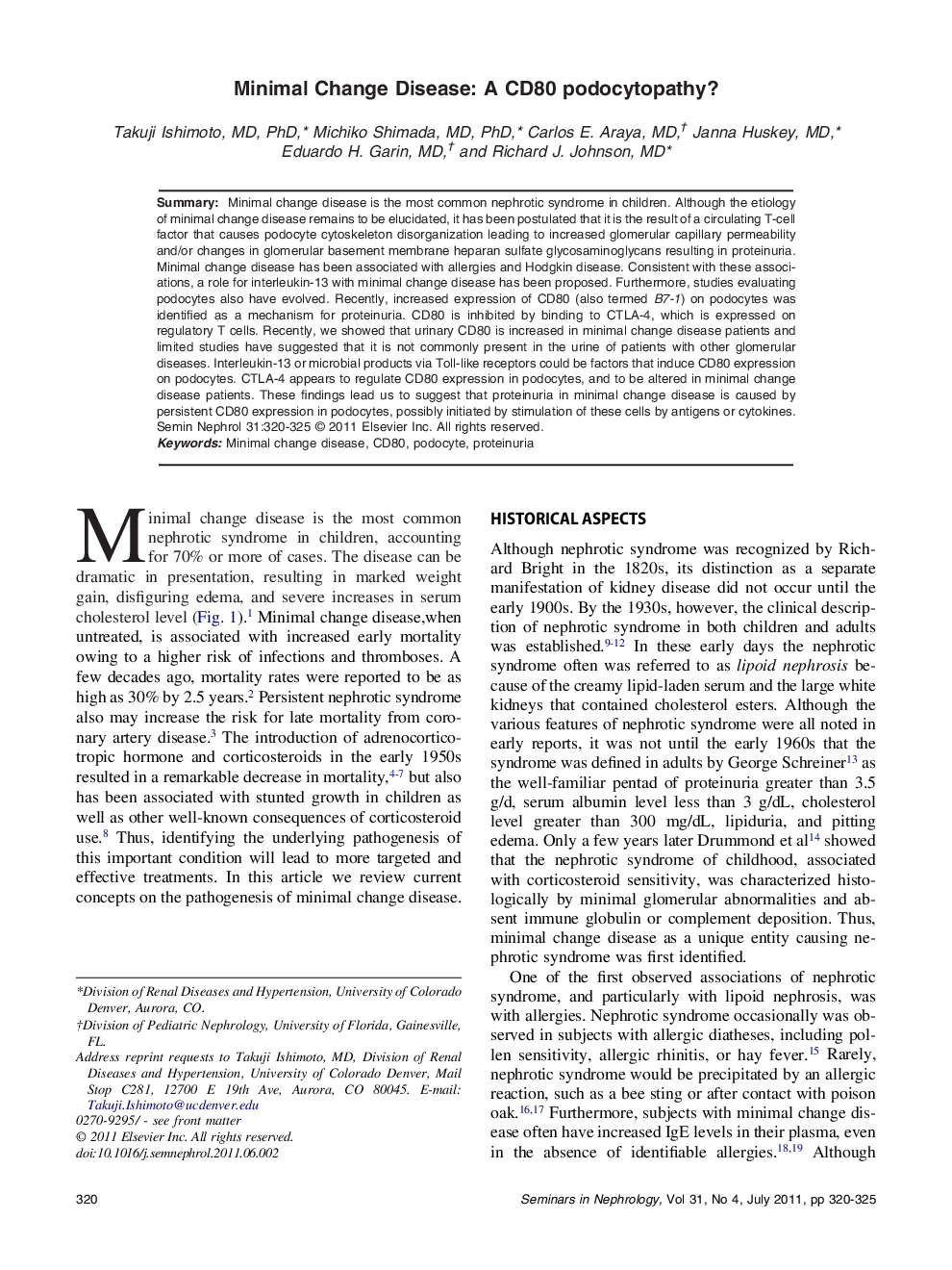| کد مقاله | کد نشریه | سال انتشار | مقاله انگلیسی | نسخه تمام متن |
|---|---|---|---|---|
| 3896712 | 1250228 | 2011 | 6 صفحه PDF | دانلود رایگان |

SummaryMinimal change disease is the most common nephrotic syndrome in children. Although the etiology of minimal change disease remains to be elucidated, it has been postulated that it is the result of a circulating T-cell factor that causes podocyte cytoskeleton disorganization leading to increased glomerular capillary permeability and/or changes in glomerular basement membrane heparan sulfate glycosaminoglycans resulting in proteinuria. Minimal change disease has been associated with allergies and Hodgkin disease. Consistent with these associations, a role for interleukin-13 with minimal change disease has been proposed. Furthermore, studies evaluating podocytes also have evolved. Recently, increased expression of CD80 (also termed B7-1) on podocytes was identified as a mechanism for proteinuria. CD80 is inhibited by binding to CTLA-4, which is expressed on regulatory T cells. Recently, we showed that urinary CD80 is increased in minimal change disease patients and limited studies have suggested that it is not commonly present in the urine of patients with other glomerular diseases. Interleukin-13 or microbial products via Toll-like receptors could be factors that induce CD80 expression on podocytes. CTLA-4 appears to regulate CD80 expression in podocytes, and to be altered in minimal change disease patients. These findings lead us to suggest that proteinuria in minimal change disease is caused by persistent CD80 expression in podocytes, possibly initiated by stimulation of these cells by antigens or cytokines.
Journal: Seminars in Nephrology - Volume 31, Issue 4, July 2011, Pages 320–325